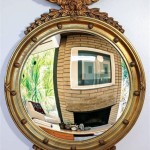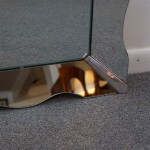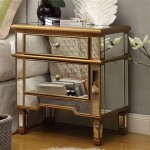Spray Paint for a Mirror Frame: A Comprehensive Guide
Mirrors, ubiquitous in homes and commercial spaces, serve both functional and aesthetic purposes. The frame surrounding a mirror plays a pivotal role in defining its overall style and integrating it into the surrounding decor. When a mirror frame becomes outdated, damaged, or simply no longer complements the existing aesthetic, refurbishment becomes a viable alternative to complete replacement. Spray paint offers a cost-effective and relatively simple method for transforming a mirror frame, allowing for customization and a refreshed appearance.
This article will explore the process of using spray paint to revitalize a mirror frame. It will cover the necessary preparations, types of spray paint suitable for various frame materials, application techniques, and finishing touches to ensure a professional and durable result. Understanding these steps is crucial for achieving a successful and visually appealing outcome.
Key Point 1: Preparation is Paramount
Before any paint is applied, meticulous preparation of the mirror frame is essential. This stage directly impacts the adhesion of the paint and the overall quality of the final finish. Proper preparation involves cleaning, sanding, and priming, each serving a distinct purpose.
The initial step is to thoroughly clean the mirror frame. This involves removing any dust, dirt, grease, or previous coatings. A mild detergent solution and a soft cloth are typically sufficient for general cleaning. For stubborn residues, a degreasing agent may be necessary. Ensure the frame is completely dry before proceeding to the next step.
Sanding is crucial for creating a textured surface that promotes paint adhesion. The appropriate grit of sandpaper depends on the existing finish and the material of the frame. For previously painted frames, a medium-grit sandpaper (around 120-180 grit) can be used to scuff the surface. Bare wood frames may benefit from a coarser initial sanding followed by a finer grit to smooth out imperfections. Plastic or metal frames require careful sanding to avoid damage. A fine-grit sandpaper (220 grit or higher) is generally recommended, and it is important to test a small, inconspicuous area first.
After sanding, the frame must be thoroughly cleaned again to remove any sanding dust. A tack cloth is highly effective for this purpose, as it picks up even the finest particles. Alternatively, a damp cloth followed by a dry cloth can be used. Ensure the frame is completely dry before moving on to priming.
Priming is the final preparatory step and is often overlooked, but it is vital for achieving a uniform and durable finish. Primer creates a consistent base for the paint, ensuring proper adhesion and preventing the underlying material from affecting the color or finish of the topcoat. Choose a primer specifically designed for the material of the frame (wood, metal, or plastic). Apply the primer in thin, even coats, following the manufacturer's instructions. Allow the primer to dry completely before proceeding to the next step.
Masking the mirror itself is also a critical preparation step. Using painter's tape and paper or plastic sheeting to completely cover the mirror surface will prevent unwanted paint from getting onto the glass. Ensure the tape is firmly adhered to the frame to create clean, sharp lines.
Key Point 2: Selecting the Right Spray Paint
The choice of spray paint is crucial for achieving the desired aesthetic and ensuring the longevity of the finish. Different types of spray paint are formulated for specific materials and purposes. Understanding the characteristics of each type will help in selecting the most appropriate option for the mirror frame.
Acrylic spray paint is a versatile option suitable for various frame materials, including wood, metal, and plastic. It offers good adhesion, durability, and a wide range of colors and finishes. Acrylic paints are water-based, making them relatively low in odor and easy to clean up. They also tend to be more resistant to fading and cracking than some other types of spray paint.
Enamel spray paint is known for its hard, durable finish, making it an excellent choice for frames that will be subject to frequent handling or exposure to moisture. Enamel paints are oil-based, which gives them superior resistance to scratches, chips, and chemicals. However, they typically have a stronger odor than acrylic paints and require mineral spirits for cleanup. Enamel paints may also take longer to dry.
Specialty spray paints, such as metallic, textured, or clear coat finishes, can add unique visual effects to the mirror frame. Metallic spray paints can create a glamorous or industrial look, while textured paints can add depth and dimension. Clear coat sprays can be applied as a final layer to protect the paint and enhance its sheen. When using specialty paints, it is essential to follow the manufacturer's instructions carefully to achieve the desired result.
Consider the environment in which the spray painting will take place. Ensure adequate ventilation to avoid inhaling fumes. If painting indoors, use a well-ventilated area or wear a respirator. Protect the surrounding surfaces from overspray by covering them with drop cloths or plastic sheeting.
Before committing to a particular spray paint, it is advisable to test it on a small, inconspicuous area of the frame or a similar material. This will allow for assessing the color, finish, and adhesion of the paint before applying it to the entire frame.
Key Point 3: Application Techniques and Finishing Touches
The application of spray paint requires a steady hand and proper technique to achieve a smooth, even finish. Thin, multiple coats are generally preferred over thick, single coats to prevent runs, drips, and uneven coverage.
Hold the spray paint can approximately 8-10 inches from the frame and apply the paint in a consistent, sweeping motion. Overlapping each pass slightly will ensure uniform coverage. Avoid holding the can in one place for too long, as this can lead to paint buildup and drips. Maintain a consistent distance and speed throughout the application process.
Allow each coat of paint to dry completely before applying the next. The drying time will vary depending on the type of spray paint, the ambient temperature, and the humidity. Consult the manufacturer's instructions for specific drying times. Lightly sanding between coats with fine-grit sandpaper (220 grit or higher) can help to smooth out any imperfections and improve adhesion for subsequent coats.
For intricate details or hard-to-reach areas, consider using an angled spray nozzle or a small brush to apply the paint. This will allow for greater control and precision. If drips or runs occur, carefully remove them with a clean cloth or brush before the paint dries completely.
Once the final coat of paint has dried, carefully remove the painter's tape and protective coverings. Inspect the frame for any imperfections or areas that may require touch-up. A small artist's brush can be used to apply touch-up paint to these areas.
Applying a clear coat as a final step can enhance the durability and appearance of the painted frame. Clear coats are available in various finishes, such as gloss, satin, and matte. Choose a clear coat that complements the desired aesthetic and provides adequate protection against scratches, chips, and UV damage. Apply the clear coat in the same manner as the paint, using thin, even coats.
After the clear coat has dried completely, allow the frame to cure for several days before handling it extensively or reattaching it to the mirror. This will allow the paint and clear coat to fully harden and achieve maximum durability.
Properly disposing of leftover spray paint is important for environmental safety. Consult local regulations for guidelines on disposing of hazardous waste. Empty spray paint cans can often be recycled.
By following these detailed preparation, selection, and application guidelines, it is possible to achieve a professional-looking, durable, and aesthetically pleasing finish on a mirror frame using spray paint. Regular cleaning and maintenance will help to preserve the appearance of the frame and extend its lifespan. With careful attention to detail and proper technique, spray painting a mirror frame can be a rewarding and cost-effective way to transform a dated or damaged piece into a stylish and functional element of interior decor.

Spray Painted Gold Yard Mirror How To Paint A Frame

How To Paint A Mirror Frame Gold Easily In Two Steps

Spray Painted Rainbow Mirror Makeover Colorshot Paint
Spray Paint Is Bae Ball Jacks Designs

How To Spray Paint A Mirror Frame Painting Frames Furniture Diy

Living My Style Diy Gold Spray Paint High End Makeover Home Interior

How To Paint A Mirror Frame

How Do You Distress A Gold Mirror Frame Hometalk

Diy Mirror Effect How To Do Aged Tutorial Old Maple Home

How To Spray Paint A Mirror








